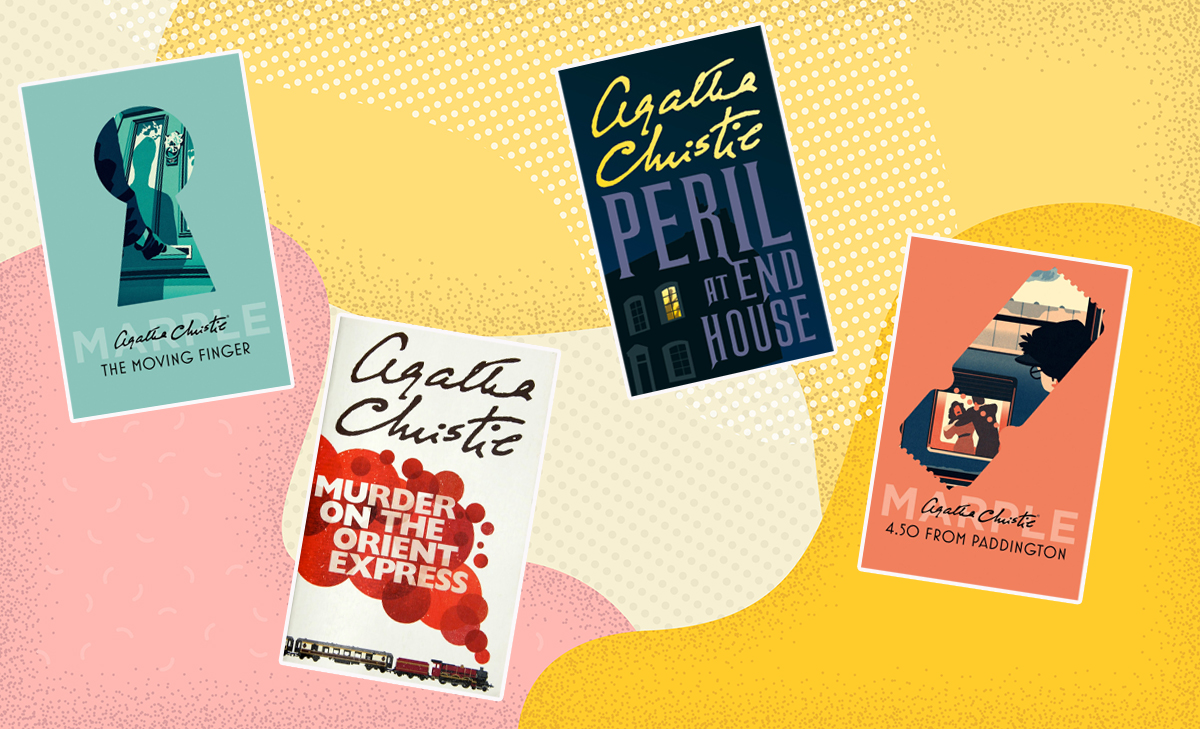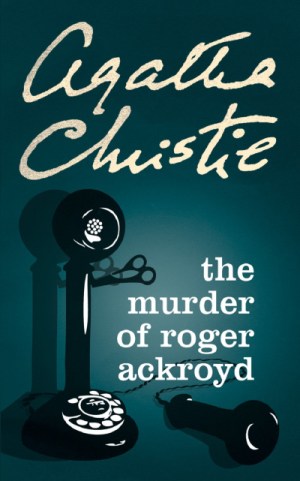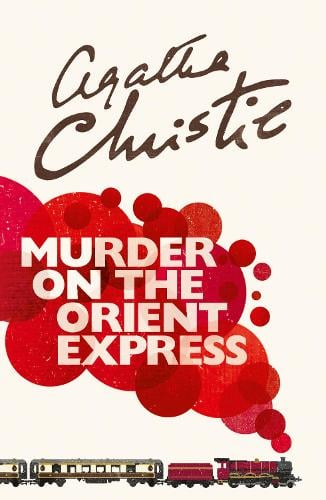The Best Agatha Christie Novels, Ranked

Possibly the best known mystery novelist in the English-speaking world, Agatha Christie redefined the genre with her classic whodunits.
Not just thrilling page turners, Christie’s novels also explored social issues of the time, albeit through the lens of her own, often unnoticed biases. Christie fans have strong, frequently contentious opinions about which of her novels are the best, and while we can’t claim to have an objective view. we’re still pretty sure ours is the right one. So here’s The Mary Sue’s list of the top Agatha Christie novels, ranked from great to absolute best.
15. The Murder on the Links

A classic Inspector Poirot story, narrated by his dear queer platonic best boyfriend Captain Hastings, The Murder on the Links is iconic, and not just because it’s the one where Hastings meets his wife. It has romance, intense drama, and an exciting plot featuring acrobats, fake murders accidentally turning real, everyone accusing everyone else, and surprise twins. Don’t miss it for the fights Hastings and Poirot have over whether or not girls are really all that attractive.
14. The Murder of Roger Ackroyd

Incredible unreliable narrator. The absolute rage when you discover the twist. The Murder of Roger Ackroyd is a very good and satisfying book. With all the classic Christie tropes of toxic family drama, melodramatic lovers and rich people problems, this one still manages to surprise you in the best, most aggravating way.
13. The Mirror Crack’d From Side to Side

When local gossip drinks a poisoned cocktail at a party given by the movie star who’d just moved into the nearby big house it seems unsolvable, but there’s no such thing when Miss Marple’s involved. It turns out to be a long, sordid affair that began years in the past; combining tragedy with absolute selfishness, and repeating lessons about fan entitlement and infectious diseases that are sadly more relevant than ever.
12. A Pocket Full of Rye

When a wealthy man is poisoned naturally everyone blames his young wife, but then when her murder follows on shortly after it becomes clear something else is going on. Not to mention sinister clues like dead blackbirds, rye grains stuffed into the pocket of a victim, and a murdered housemaid found with a peg on her nose. Only Jane Marple can solve a case like this, and solve it she does in her inimitable way, wielding immense practicality in one hand and the fact that every young person in the country thinks of her as an aunt in the other. It’s satisfying, but sad—which is why it only clocks in at a twelve on my list.
11. Mrs. McGinty’s Dead

When an elderly widow is brutally murdered and the blame stuck squarely on her young lodger Poirot thinks something more is going on, and must race against time to keep the boy from hanging for someone else’s crime. It turns out that old Mrs McGinty wasn’t as innocent as she seemed and three separate murderer’s who have previously escaped justice may be involved. Poirot is also having to deal with an awful lot of dogs while he pursues his investigations, which is delightful. Mrs. McGinty’s Dead is a classic Poirot and gives you exactly what you want from a Christie novel.
10. A Body in the Library

When one of Miss. Marple’s innumerable friends calls her with the news that they’ve just found a dead body in her library Marple is on her way. Something far more complicated, and nastier, is going on than either of them could have initially imagined however, involving secret marriages, inheritance scams, and misplaced identities. Moving between stately homes to hotels to sleepy villages Marple uncovers a web of conspiracy and greed that left more bodies in its wake than just the one found that morning in the library.
9. Death Comes as the End

The first Christie I read (therefore securing a permanent place in my heart), Death Comes as the End is an interesting historical novel set in Egyptian Thebes c. 2000 BC. Following the widow Renisenb as she returns to her father’s house, we watch the family unravel as he brings a new wife home and the murders begin. A book that’s focused not just on Renisenb as the narrator but on the lives of women in ancient Egypt, it’s a fascinating and well-researched insight into that world. The female charactes, particularly Renisenb’s grandmother, are distinct and fascinating.
8. The ABC Murders

The ABC Murders is full of all the classic serial killer dancing with the police tropes we see in contemporary procedurals like Criminal Minds and Hannibal. In this novel, Poirot is receiving notes from a killer detailing the murders they’re about to commit. The murders seem random—based solely on the victim’s initials—as the killer works their way through the alphabet with the help of an ABC Railway guide, and the police, as is often the case, are doing a less than stellar job. Poirot puts together his own investigative core to figure it out, and of course, this being Christie, there’s a twist that you really won’t see coming.
7. The Moving Finger

Featuring a suicidal pilot recovering from a crash, a young woman who’s an outsider in her own family, and a series of poison pen letters that eventually (inevitably) lead to murder, The Moving Finger is another one of Christie’s novel’s where she explores the sordid, grubby things people will do for wealth and to protect their reputations. It’s somewhat different in feel from her other novels, and that’s down to the main character and how unlike Christie’s other protagonists he is. The relationship between the woman and the pilot is interesting, and Christie’s depiction of his mental health problems and her probable neurodivergence—along with the impact of her maltreatment at the hands of her parents—is sensitive and empathetic.
6. The Hollow

One of the rare Poirot’s that begins and ends from the perspective of the suspects rather the the detective himself The Hollow features the usual Christie cast of horrible rich people, but with a twist. When one of their number is pushed too far by the rest and kills another they all close ranks to protect the killer, and it’s up to Poirot to untangle the mess and work out which of them is truly guilty. With all the infidelity, luxury, pettiness, and spite that you want to see from a Christie rich people murder soap, The Hollow is a thrilling read.
5. A Murder Is Announced

A Murder Is Announced manages to mix whimsy with a grim look at selfishness and greed. Starting with a surprise announcement in the newspaper that a murder will be taking place at the home of Letitia Blacklock, villagers—including the visiting Miss Marple—assume it’s an invitation to a murder mystery party and flock to attend. Naturally (because this is Christie), someone does in fact end up dead, kicking off a string of further murders until Marple unravels the whole sordid mess. There’s also an obvious lesbian couple in the book, and even though one of them does end up dead, it’s still a touching depiction of queerness from a period when that wasn’t allowed.
4. And Then There Were None

Quite possibly the first slasher novel, And Then There Were None is an example of why, if you receive an invitation to a mysterious island vacation, you absolutely shouldn’t go. Unlike later fish-in-a-barrel-style murder sprees, everyone in this novel deserves to be there, and deserves their death, but working out who is responsible is difficult. And the reveal is one of those satisfying/frustrating surprises. Plus the dread Christie manages to infuse into the novel is intense, making for a very enjoyable read (if you like the feel of vicarious dread).
3. Peril at End House

Though Peril at End House is only number three on the list, this one might be my favorite. Another outing for the boys, Poirot and Hastings meet a young woman who’s undergone a troubling series of near-death experiences. Concerned for her well-being, Poirot and Hastings involve themselves, only for the situation to suddenly get a whole lot worse (and complex) when her cousin turns up murdered, likely mistaken for her by the killer.
2. 4.50 From Paddington

A deeply sinister novel, 4.50 From Paddington starts off with a murder—a woman being strangled on a train, glimpsed by a friend of Miss Marple through the window of her carriage on another train passing in the other direction. No one believes what she saw, but Marple figures out the likely location of the body, and dispatches a young friend of hers to infiltrate the nearby great house and see what she can find. What she finds is more classic Christie family dysfunction, scandal and secrets, and more than one hidden identity come to light.
1. Murder on the Orient Express

A murder on a snowbound train turns out to be a conspiracy of 12, out to avenge the killing of a child and the four tragic deaths that followed after. Each passenger first seems unconnected to the others, creating what would have been the perfect crime were it not for Poirot’s unexpected presence on the train, unravelling their true identities and the connections that bind them to each other. It’s a book about justice and what that means, and how the courts don’t always deliver—and whether we then have the right to seek justice for ourselves in spite of them. 12 is the number of a jury after all, and in Murder on the Orient Express, Christie asks the reader to decide for themselves how this differs from a formal trial by a jury of your peers.
(featured image: Harper Collins / Getty Images)
Have a tip we should know? [email protected]
